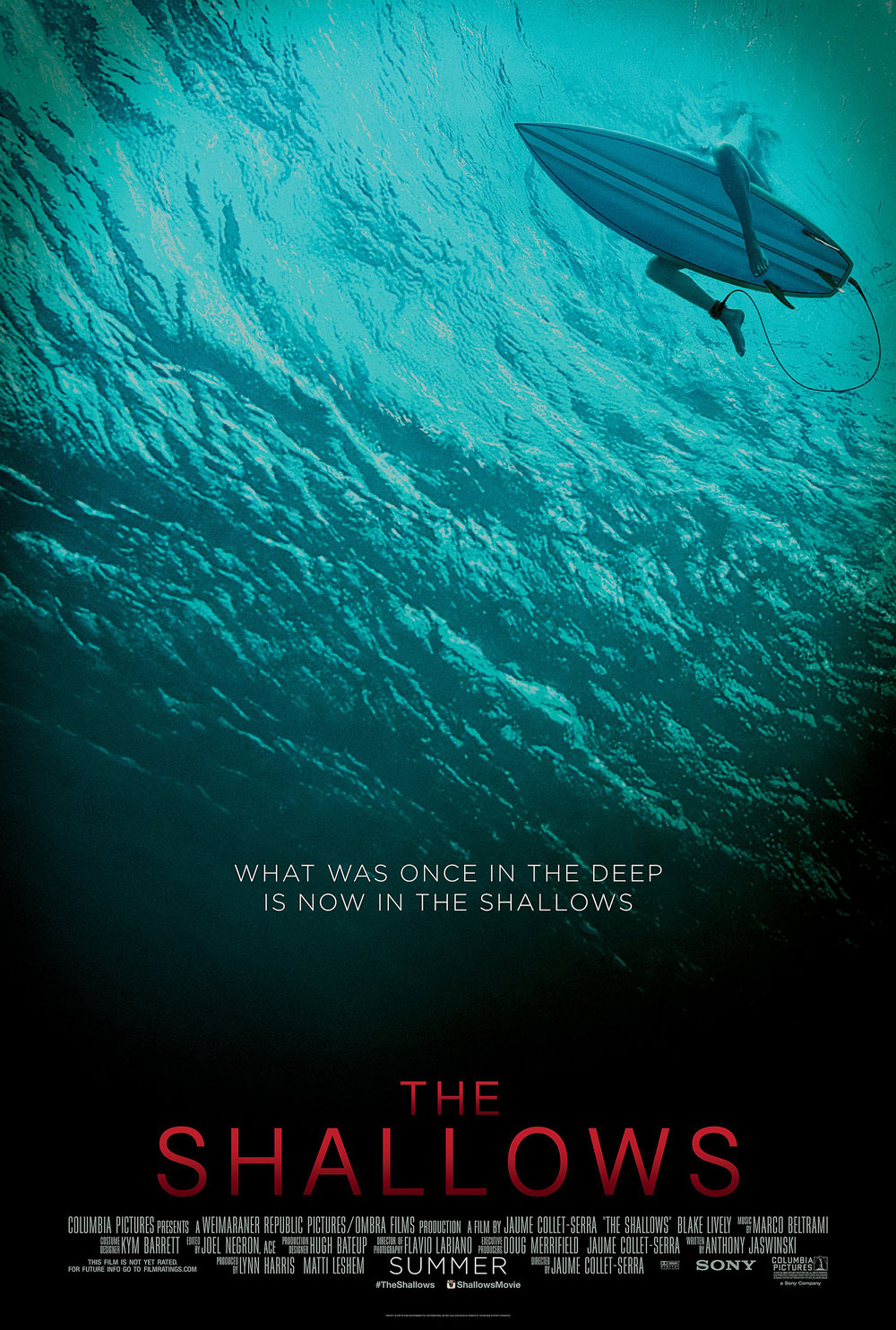
Jaume Collet-Serra is a director who can generally elevate whatever material he’s working with. The “Non-Stop” and “Orphan” director makes B-movies – films that, in less capable hands, wouldn’t be nearly as entertaining as they are. The same can be said for his newest film, “The Shallows,” an enjoyable and often exciting thriller that rises above a somewhat inconsistent script.
Nancy Adams (Blake Lively) heads off to paradise to surf on a secluded and mostly unknown beach that her mother, who recently passed away, told her about. With the exception of a few visitors, she’s completely isolated. On Nancy’s second trip into the water, she comes across a dead whale and quickly realizes she’s truly not alone; there’s a great white shark in the shallows. Bitten and nearly killed, she’s left stranded on a rock too far from the shore. For the most part, “The Shallows” is a one-woman show, although Nancy does befriend a seagull.
Anthony Jaswinski’s script doesn’t stretch the premise out too much. For the most part, “The Shallows” is a refreshingly efficient and cleanly structured summer movie, one that runs under 90 minutes – a rarity this time of year. There’s little fat to this story. At the start of the film, Nancy is already on her way to the beach, so Jaswinski kicks things off running, for the most part. There is a minor exposition dump at the start, but it’s quick and clean, and it helps that the opening scene features two actors (Blake Lively and Óscar Jaenada) that have a natural and charming rapport, so the information goes down smoothly.
Nancy’s backstory is mostly peppered in later, and that’s the only serious problem with “The Shallows.” As a piece of spectacle, the movie delivers, but as a drama, it’s routine. Whenever Jawinski and Collett-Serra attempt to add dramatic weight to the story, it does little to raise the stakes or make us care more about Nancy. Lively’s performance is compelling enough that she could have given us a sense of the life Nancy had before the shark attack, so the Facetime calls with her sister and father come across as redundant. Those sequences also just go through the motions; it’s too calculated, too obvious. They are tangents in an otherwise tightly paced movie.
When Nancy is facing off against the shark, Collet-Serra gives the character and audience little breathing room. The sense of danger continually rises in “The Shallows,” even at the start of the film, where the director impressively builds towards the attack. Even when Nancy first starts surfing, as beautiful as it is, there’s a sense of foreboding. The director jarringly, and effectively, cuts between her on top of the waves and then underwater, where the sound of crashing waves creates an unnerving effect. The second time Nancy goes into the water, Collet-Serra heightens this contrast, and it’s even more chilling. Without even seeing the shark in sight, he creates an immediate sense of fear.
The director skillfully gets a PG-13 rating without watering down any of the violence. There’s one scene, which won’t be spoiled here, that involves Nancy witnessing something horrific. Rather than cutting to what she’s seeing, Collett-Serra keeps the camera focused on Nancy’s reaction. Lively, giving a very present and convincing performance, is especially good in this scene; the reaction shot of her is enough to dig under the audience’s skin, as you know something awful is unfolding before her. It’s an excellent piece of filmmaking, and it’s one of the many impressive sequences that make “The Shallows” an exceptionally well-crafted killer shark movie.
Related Posts
Comments Off on Movie Review: “The Shallows”
Posted in: Entertainment, Movie Reviews, Movies
Tags: Blake Lively
















